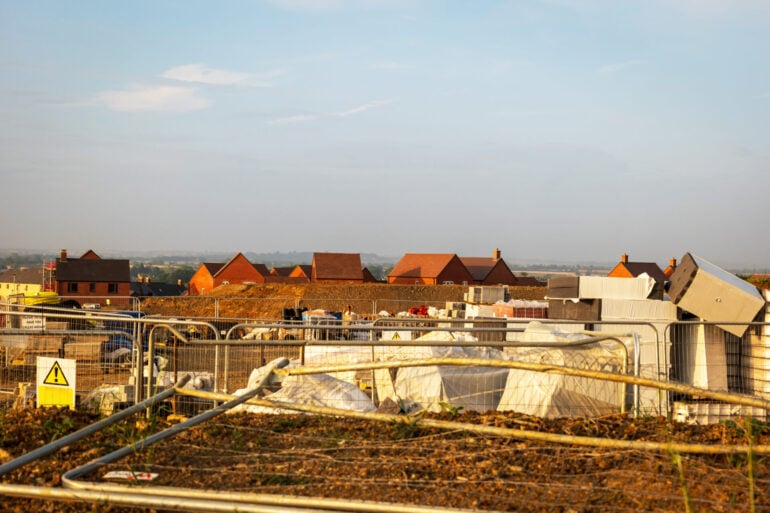UK construction activity fell again in August, marking the eighth month in a row that output has dropped, according to figures from S&P Global.
The downturn was led by sharp declines in housing and civil engineering, though the overall fall was less severe than in July.
The purchasing managers’ index rose to 45.5 in August from 44.3 in July, but still stayed well below the 50 mark that signals growth.
Commercial building held up better than other areas, with a reading of 47.8, but residential activity dropped to 44.2 and civil engineering fell to 38.1.
The fall in house building was the steepest since February, and civil engineering saw the fastest drop in activity since October 2020.
Firms reported not enough new projects coming in to replace finished work.
New orders shrank for the eighth consecutive month, but the rate of decline slowed to the lowest since January.
Companies pointed to tough market conditions, fierce price competition and weak UK economic growth as pressure points.
Ongoing weak demand led to hiring freezes and job cuts, with August seeing the biggest fall in employment since May.
Some firms said they were cutting back on recruitment to manage rising wage costs.
Subcontractor use also dropped sharply, one of the fastest falls in five years.
Purchases of construction materials were cut for the third month running, with the sharpest drop in buying in three months.
Lower demand meant suppliers delivered materials more quickly in August.
Input costs went up at the slowest rate since October 2024, even though some suppliers tried to raise prices due to higher wages and transport charges.
Subcontractor charges saw the slowest rise in six months.
Business confidence in the sector worsened. Only 34% of firms expected output to rise in the next year, down from 37% in July, with 22% predicting a fall.
Companies cited subdued market conditions, high uncertainty and clients being cautious, though some mentioned lower borrowing costs and hopes for more infrastructure work as positives.
Tim Moore, economics director at S&P Global Market Intelligence, said: “Construction activity has decreased throughout the year-to-date, which is the longest continuous downturn since early-2020.
“August data signalled only a partial easing in the speed of decline after output fell at the fastest pace for over five years in July.
“Sharply reduced levels of housing and civil engineering activity were again the main reasons for a weak overall construction sector performance.”
Moore added: “Commercial work showed some resilience in August, with the downturn the least marked for three months.
“There were some positive signals on the supply side as vendors’ delivery times shortened, subcontractor availability improved and purchasing price inflation hit a ten-month low.
“However, easing supply conditions mostly reflected subdued demand and a lack of new projects.”
He said: “Elevated business uncertainty and worries about broader prospects for the UK economy meant that construction sector optimism weakened in August.
“The proportion of panel members expecting a rise in output over the year ahead was 34%, down from 37% in July and lower than at any time since December 2022.”




